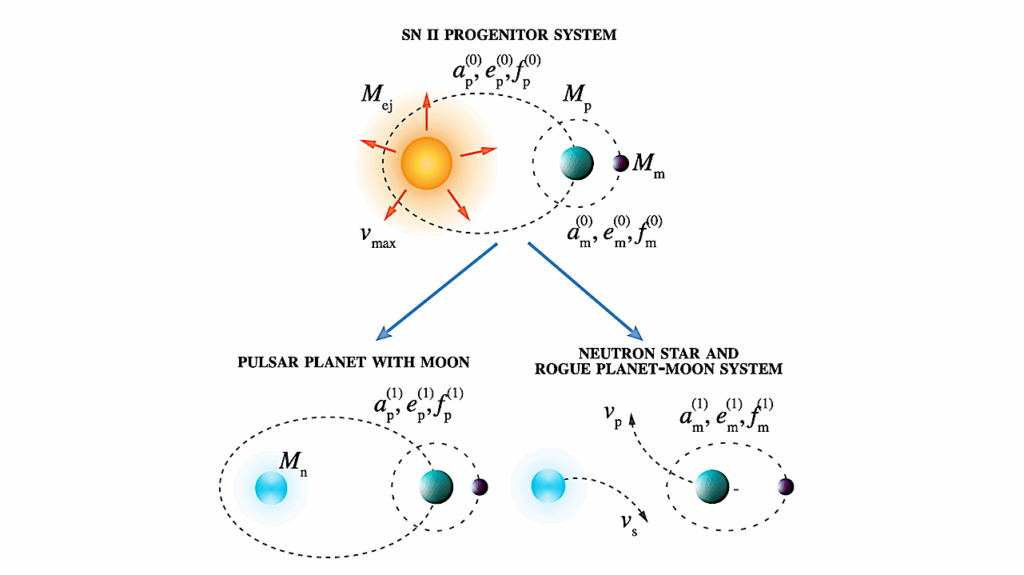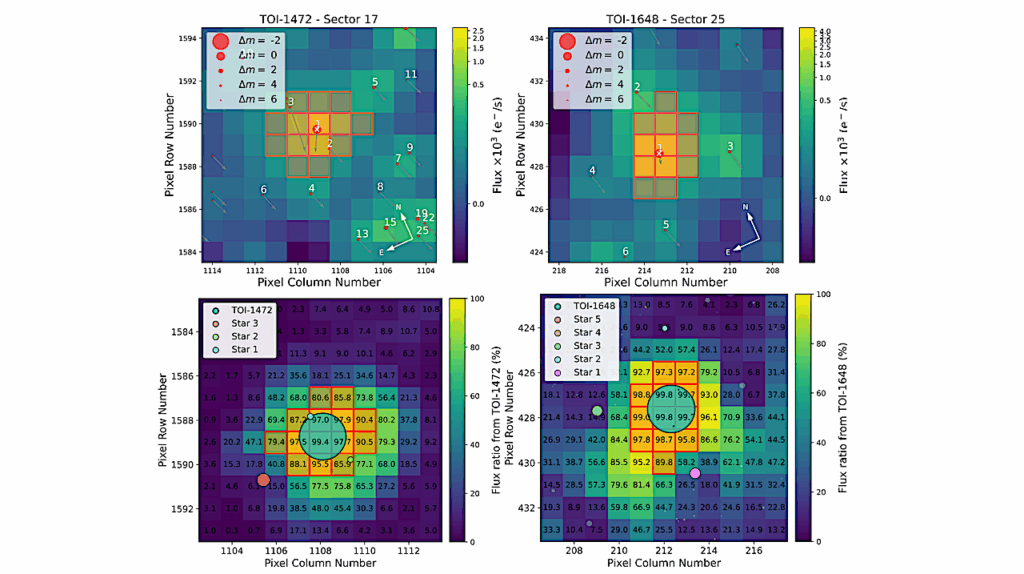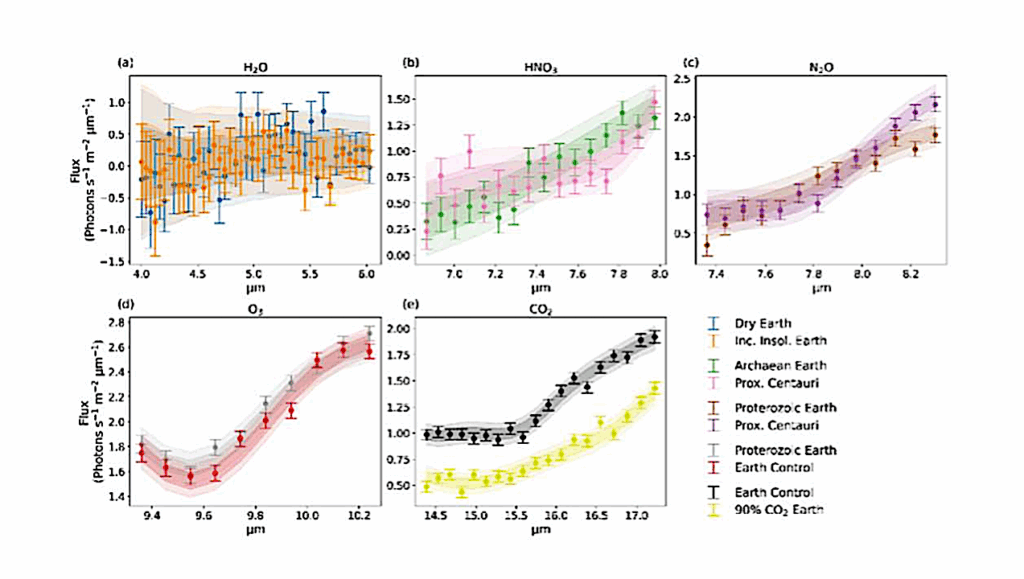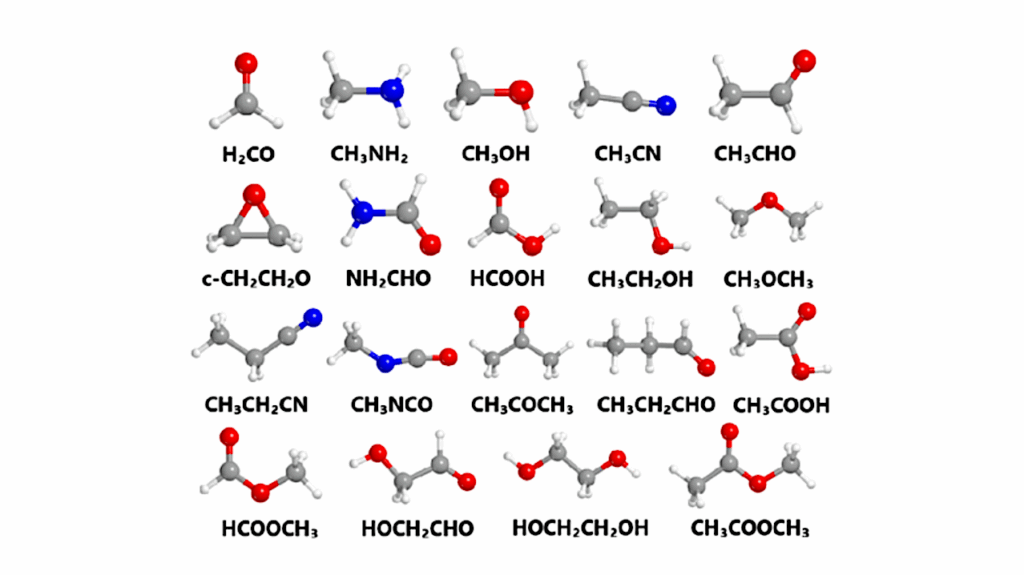Searching For Exoplanets Born Outside The Milky Way: VOYAGERS Survey Design
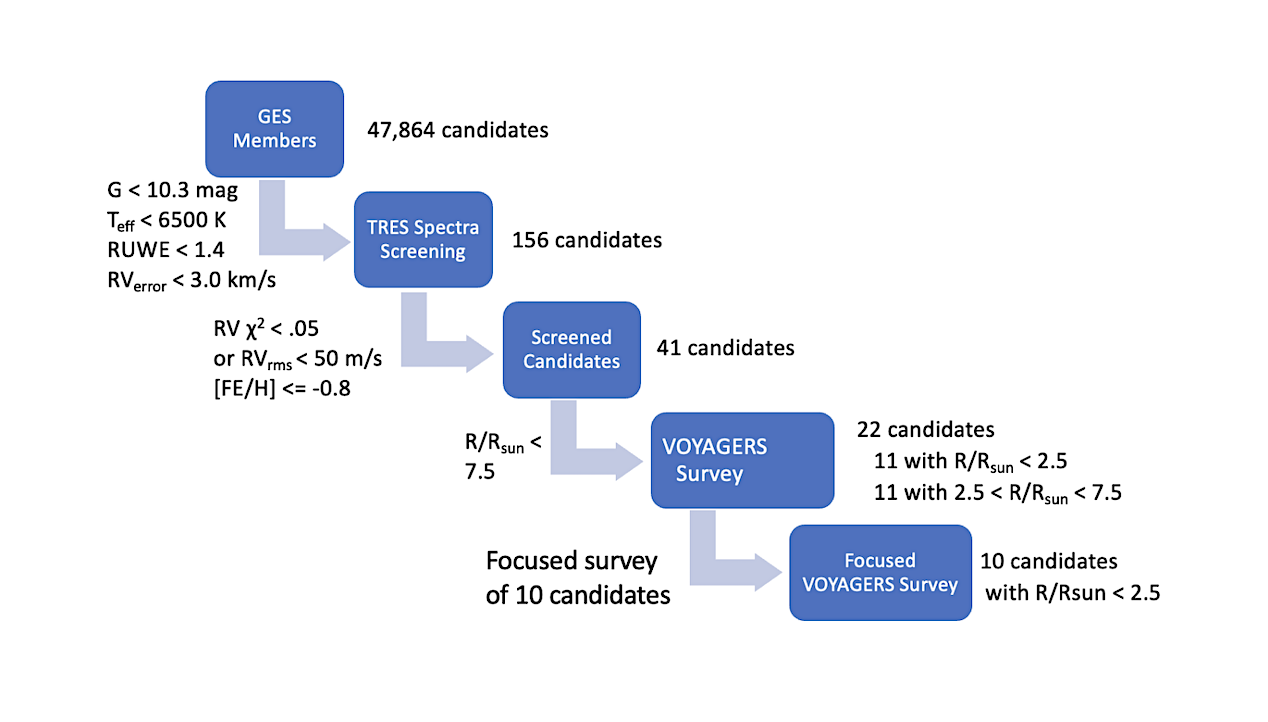
Observations over the past few decades have found that planets are common around nearby stars in our Galaxy, but little is known about planets that formed outside the Milky Way.
We describe the design and early implementation of a survey to test whether planets also exist orbiting the remnant stars of ancient dwarf galaxies that merged with the Milky Way, and if so, how they differ from their Milky Way counterparts.
VOYAGERS (Views Of Yore – Ancient Gaia-enceladus Exoplanet Revealing Survey) is a radial velocity (RV) search using precision spectrographs to discover exoplanets orbiting very low metallicity (−2.8<[Fe/H]≤−0.8) stars born in the dwarf galaxy Enceladus, which merged with the Milky Way galaxy about 10 Gyr ago.
A sample of 22 candidates have been screened from a catalog of Gaia-Enceladus-Sausage (GES) members using a combination of stellar properties and reconnaissance observations from the TRES spectrograph. Precision RV measurements have been initiated using the NEID, HARPS-N, and CARMENES spectrographs. We plan to focus most upcoming observations on 10 main sequence targets. Data collection is well underway, with 778 observations on 22 candidates (385 of which are 10 focus targets), but far from complete.
This survey is designed to be sensitive to sub-Neptune mass planets with periods up to hundreds of days. We note that the RV analysis gives mass multiplied by sin(inclination) or the minimum mass for exoplanets. The expected survey yield is three planets, assuming that occurrence rates are similar to those in the Milky Way and taking into account the degeneracy with inclination in our yield models.
Our survey is designed to detect at least one exoplanet if occurrence rates are similar to known Milky Way exoplanets or, if no exoplanets are discovered, to rule out a Milky Way-like planet population in GES with 95% confidence level.
Robert Aloisi, Andrew Vanderburg, Melinda Soares-Furtado, Phillip Cargile, Ke Zhang, Lina Necib, David W. Latham, Sam Quinn, Emily Pass, Anne Dattilo, Giacomo Mantovan, Francesco Amadori, Mariona Badenas-Agusti, Perry Berlind, Francesco Borsa, Walter Boschin, Lorenzo Cabona, Michael L. Calkins, Hans J. Deeg, Xavier Dumusque, Gilbert A. Esquerdo, Yoshi Nike Emilia Eschen, S. Filomeno, S. Geraldía-González, Natalia Guerrero, Sydney Jenkins, Gaia Lacedelli, Mercedes López-Morales, Paula Manuela Leguizamon-Pineda, Emilio Molinari, Juan Carlos Morales, Annelies Mortier, Rohan Naidu, Domenico Nardiello, Belinda Nicholson, Isabella Pagano, Enric Palle, Marco Pedani, Matteo Pinamonti, Jesus Maldonado, Monica Rainer, Ignasi Ribas, Ken Rice, Guðmundur Kári Stefánsson, Daisy Turner, Thomas G. Wilson, Mathias Zechmeister
Comments: 19 pages, 3 tables, 10 figures, accepted to PASP
Subjects: Earth and Planetary Astrophysics (astro-ph.EP); Astrophysics of Galaxies (astro-ph.GA); Instrumentation and Methods for Astrophysics (astro-ph.IM); Solar and Stellar Astrophysics (astro-ph.SR)
Cite as: arXiv:2511.07632 [astro-ph.EP] (or arXiv:2511.07632v1 [astro-ph.EP] for this version)
https://doi.org/10.48550/arXiv.2511.07632
Focus to learn more
Submission history
From: Robert Aloisi
[v1] Mon, 10 Nov 2025 21:04:35 UTC (2,362 KB)
https://arxiv.org/abs/2511.07632
Astrobiology, exoplanet,



